2-Minute Bed Stretch Eases Bunion Pain + More Bunion Self-Care Tips
Odds are you don't need surgery — but podiatrists say these home remedies can help
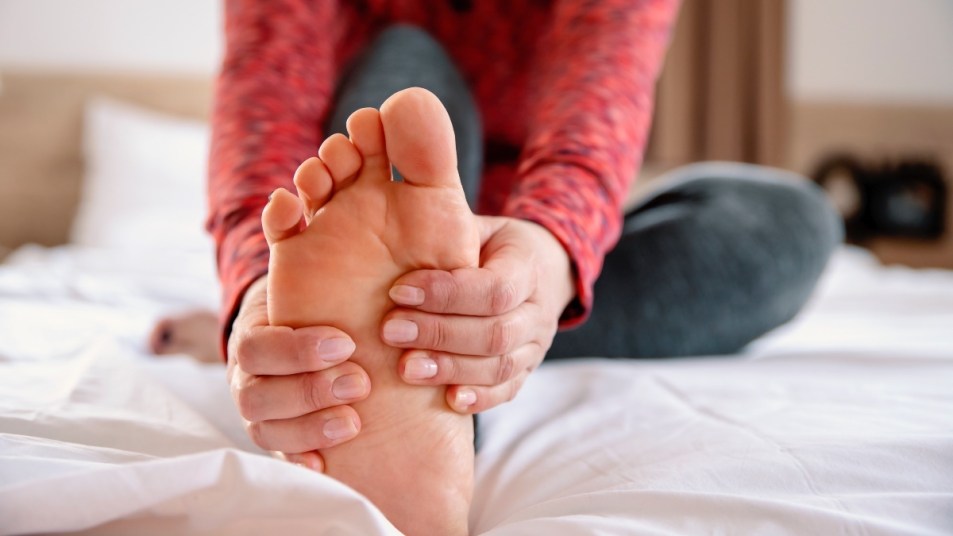
Bunions are more than just a nuisance — they can be downright painful. And the embarrassing bump can make you think twice before slipping on your favorite pair of strappy sandals. But before you turn to bunion surgery, which is often unnecessary and no walk in the park, check out these simple and inexpensive bunion self-care tricks from top podiatrists. They help quash the pain so you can get back to the things you love (hello, pickleball!).
How a bunion forms
A bunion, also known as hallux valgus, is a bony bump at the metatarsophalangeal joint (MTP) of the big toe. Though there’s another type of bunion called a tailor’s bunion (on the outside of the little toe), hallux valgus is more common.
A hallux valgus bunion occurs when the metatarsal bone just behind the big toe shifts position over time and causes the bone to come out of alignment, says Michael J. Trepal, DPM, a podiatrist and a professor of surgery at the New York College of Podiatric Medicine in New York City. “The bone can move towards the opposite foot or upwards, and the big toe can’t follow in that direction,” says Dr. Trepal. “Then a shoe pushes the toe over towards the second toe. That’s when you get that crooked configuration of the big joint.”
A bunion can cause redness, pain and inflammation. Other foot problems can arise when you have a bunion as a result of walking differently to avoid pain or rubbing. That includes the development of hammertoes, calluses under the ball of the foot, heel pain and corns or irritation caused from the overlapping of your first and second toes.
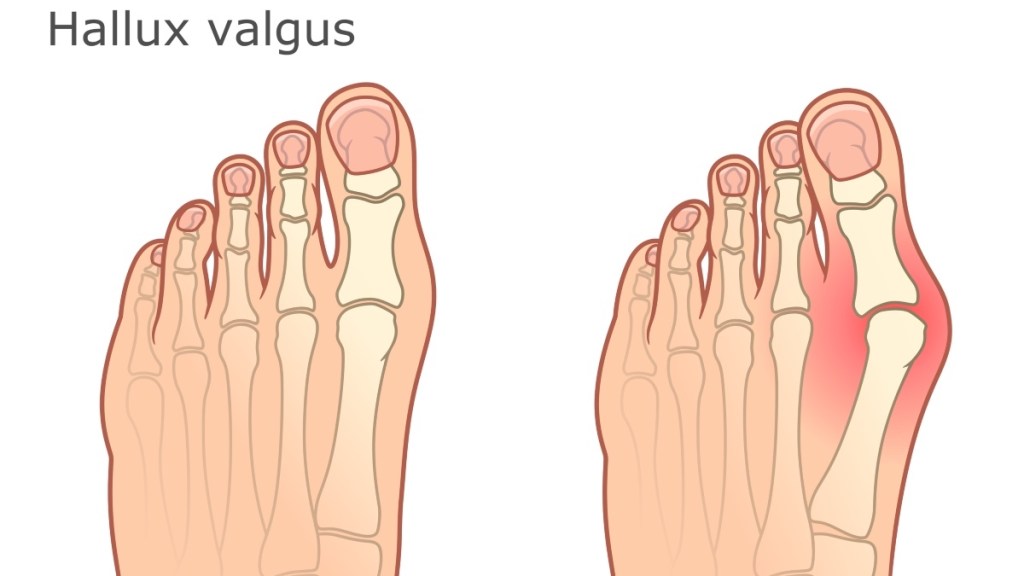
Women are more likely to develop a bunion
Bunions are incredibly common, affecting about a third of US adults, according to the National Institutes of Health. And a review in Cureus found women are up to 2.5 times more likely to develop the bumps, likely due to footwear like high heels and narrower shoes.
Fun fact: Narrow shoes have been linked to bunions for centuries. British researchers examining medieval remains found that there was an increase in bunions when pointy shoes, (rather than rounded ones) became all the rage in the 1300s.
Age is another big factor when it comes to developing bunions. “We start to see the development of bunions in people in their 30s, 40s and 50s, and it’s a progressive deformity,” says Luis A. Rodriguez Anaya, DPM, an associate professor at Barry University School of Podiatric Medicine in Miami Shores, FL.
“Bunions intrinsically are caused when there’s a muscular imbalance in the foot, with some muscles and ligaments pulling more than others,” adds Dr. Rodriguez Anaya. “It has a lot to do with what the person has done over the years. For instance, if they were a dancer, played a lot of sports, have any injuries or if there’s a genetic factor predisposing someone to having ‘bad’ feet.” (Click through to learn how walking barefoot helps ease total-body pain.)
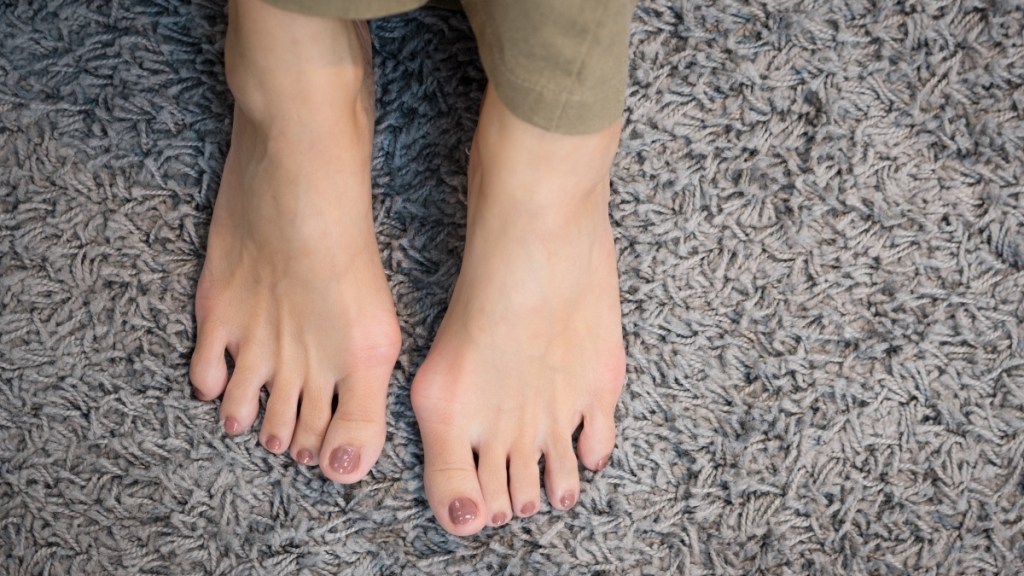
Additional risk factors for developing a bunion
You’re more likely to develop a bunion if you have one or more of these common risk factors.
- Family history: A whopping 70% of people who develop bunions have a family history, reports the American Academy of Orthopaedic Surgeons.
- Carrying around extra pounds: “Being overweight puts more pressure on your feet,” says Dr. Rodriguez Anaya. “If you are prone to having bunions, this can cause more pain because you’re putting more pressure on the foot joint itself.”
- Wearing the wrong shoes: Footwear that crowd the toes can make bunions worse by rubbing against and irritating the bone. High heels can push the toes forward, putting more pressure on the front of the foot.
- Rheumatoid arthritis: More than 90% of people with RA develop symptoms in the foot and ankle. RA may change the shape of the joints in the foot, which can cause the toes to crunch together.
5 bunion self-care remedies
You’ve likely seen an array of over-the-counter bunion products. “Bunion correctors and splints may reduce shoe irritation, but these products are unlikely to reduce the actual deformity,” explains Dr. Trepal. “There’s no good research these will routinely correct a bunion.”
However, there are plenty of other bunion self-care strategies to try from the comfort of home.
1. Bunion self-care: Do a bed stretch
Stretching is an important step for bunion self-care, and not something we do enough, says Dr. Rodriguez Anaya. “I tell all my patients to stretch the first thing when they get up,” he adds. “It’s especially important for the Achilles tendon, which, when tight, can cause more tension and pressure on the foot’s forefront.”
In the morning while still in bed, try ankle circles, pointing and flexing your feet, spreading and curling your toes and stretching your hamstrings. For a really effective stretch, place a towel under your foot and gently pull the ball of your foot towards you while keeping your leg straight, suggests Dr. Rodriguez Anaya. Check out the video below for a visual guide.
2. Bunion self-care: Apply a painkilling cream
“You can get some pain relief with a variety of over-the-counter pain reducing creams or perhaps even one with cannabis compounds,” says Dr. Trepal. Topical cannabis oil or creams may have anti-inflammatory and analgesic abilities, he adds. One to try: Hemp Activ Relief Cream.
Another option is using a cream with capsaicin, the component that gives chili peppers their heat. When applied to the skin, capsaicin helps block a compound that transmits pain messages to the brain. In fact, a review in Biomedicine & Pharmacotherapy found folks who applied capsaicin cream daily reported improvements in foot pain and its intensity within 8 weeks.
3. Bunion self-care: Consider orthotics
Orthotics are shoe inserts that help support and align your feet properly. In doing so, it can help ease pain and may help prevent a bunion from getting worse.
“Custom-made orthotics, following a comprehensive biomechanical evaluation by a podiatrist, is generally the best route,” says Dr. Trepal. But if you’re not ready to splurge on a custom pair of orthotics, OTC varieties can still help.
The American Podiatric Medical Association recommends finding a pair that suits your planned level of activity, such as whether you’ll need them for running or for a work shoe. For the best bunion self-care, it’s important to look for an insert that will fit the contours of your shoe, and if possible, try them on before you buy. (Click through to see our best podiatrist-recommended insoles.)
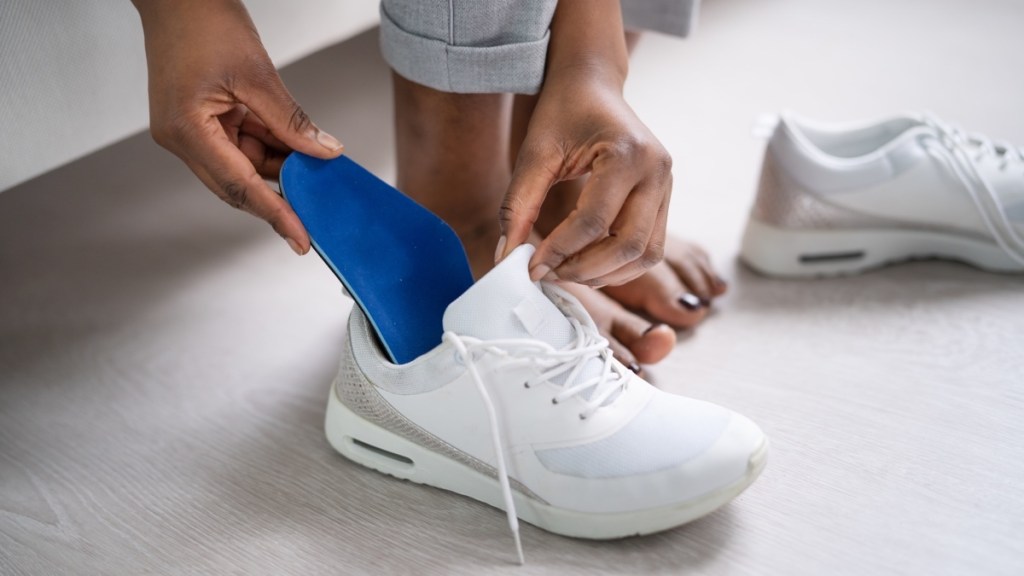
4. Bunion self-care: Pad your feet
Small, round cushions you can put on your bunions help provide a buffer between your foot and your shoe, preventing any rubbing or pressure, says Dr. Rodriguez Anaya. One to try: Dr. Scholl’s Bunion Cushions.
5. Bunion self-care: Try an Epsom salt soak
Submerging your feet into a warm foot bath with ½ cup of Epsom salts for 20 minutes eases joint and muscle pain. Researchers in India found arthritis patients who soaked in Epsom salts twice a day had a significant reduction in pain and an improvement in their functional abilities, thanks to Epsom salt’s ability to tame inflammation.
Other perks of an Epsom salt soak: It eases stress, promotes restful sleep and softens skin — even rough, dry heels, says Dr. Rodriguez Anaya.
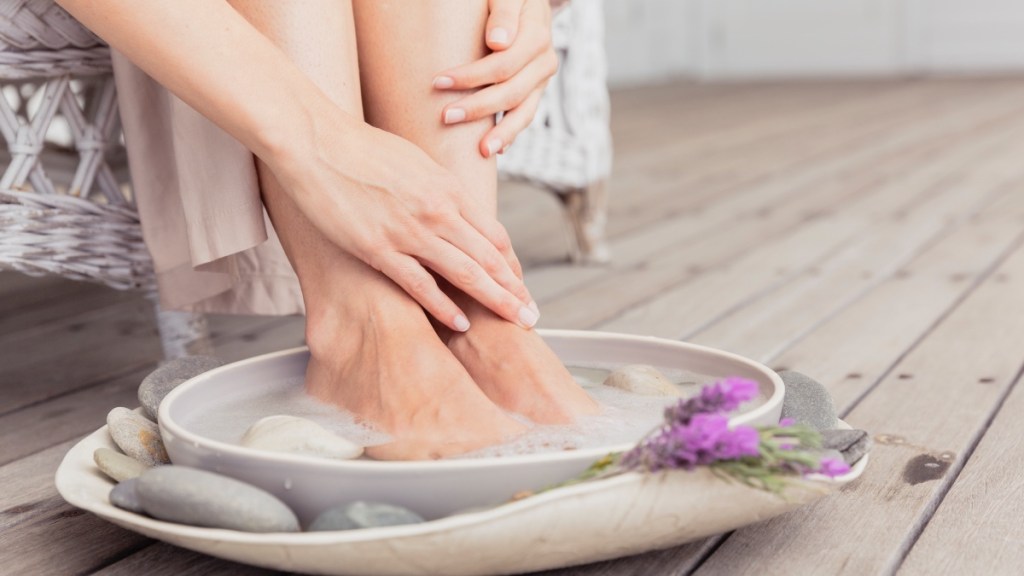
When to see a doctor for bunion relief
If self-care doesn’t provide enough relief, or you want to get rid of a bunion for cosmetic reasons, surgery is a possibility. And while surgery is the only way to completely get rid of a bunion, it’s not foolproof. “A bunion can come back, even after it’s removed,” warns Dr. Trepal.
The type of bunion removal procedure you may need depends on the magnitude and severity of the bunion, says Dr. Trepal. “However, in just about all cases, the doctor will cut the bone and reposition it.”
Dr. Rodriguez Anaya says people should consider surgery if they have pain, are unable to wear shoes and are limited to what kinds of activity they can do because of their bunions. “If you don’t have pain or your bunion isn’t really a problem, we’re probably not going to do surgery,” he adds.
For more ways to keep your feet happy and pain-free:
Foot Doctors Share 6 Ways to Ease Toe Cramps & What It Means When the Pain Strikes After Exercise
Top of Foot Pain Is The Foot Problem No One Talks About — Doctors Reveal How to Outsmart It
Experts Reveal How to Tap Into the Benefits of Walking Barefoot for Less Pain + Deeper Sleep
This content is not a substitute for professional medical advice or diagnosis. Always consult your physician before pursuing any treatment plan.















